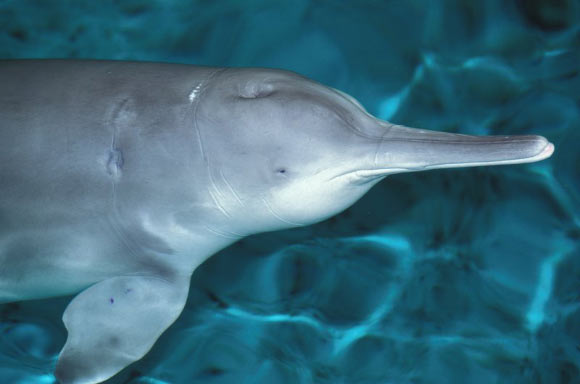Parapontoporia, an extinct genus of long-snouted dolphins that lived off the Pacific coast of North America from the Late Miocene epoch until the Pliocene, was likely to have been able to hear within narrow-band high frequency ranges, according to a new analysis of Parapontoporia’s bony labyrinth.
“Whales, dolphins, and porpoises (cetaceans) embody one of the most dramatic transitions in mammalian history: the return to water from land,” said Vanderbilt University researcher Dr. Joyce Sanks and Senckenberg Research Institute and Natural History Museum’s Dr. Rachel Racicot.
“Consequently, this group acquired a series of aquatic adaptations, including movement of the nostrils to the top of the head, and streamlining of the body.”
“Echolocation evolved early in the evolutionary history of toothed whales (Odontoceti), in the Oligocene, and all modern toothed whales echolocate.”
“The biosonar clicks of most living toothed whales typically encompass a broad frequency spectrum, ranging from tens of kilohertz up to 150-170 kHz.”
“Conversely, certain toothed whales exhibit distinctive biosonar clicks that are narrow in bandwidth but have a high centroid frequency.”
“These unique clicks have peak frequencies ranging from 125 to 140 kHz and bandwidths of 11-20 kHz.”
Using high-resolution X-ray CT scans, the authors examined the inner ears of three Parapontoporia specimens from two species, Parapontoporia sternbergi and Parapontoporia pacifica, from the collections of the San Diego Museum of Natural History.
With the help of 3D models, they were able to prove that these creatures already possessed narrow-band high-frequency hearing during the Miocene, around 5.3 million years ago.
“The echolocation used by the animals also developed quite early in their evolutionary history,” Dr. Racicot said.
“The animals emit a sound wave that bounces off an object and returns an echo, which provides information about the distance and size of…
Read the full article here

